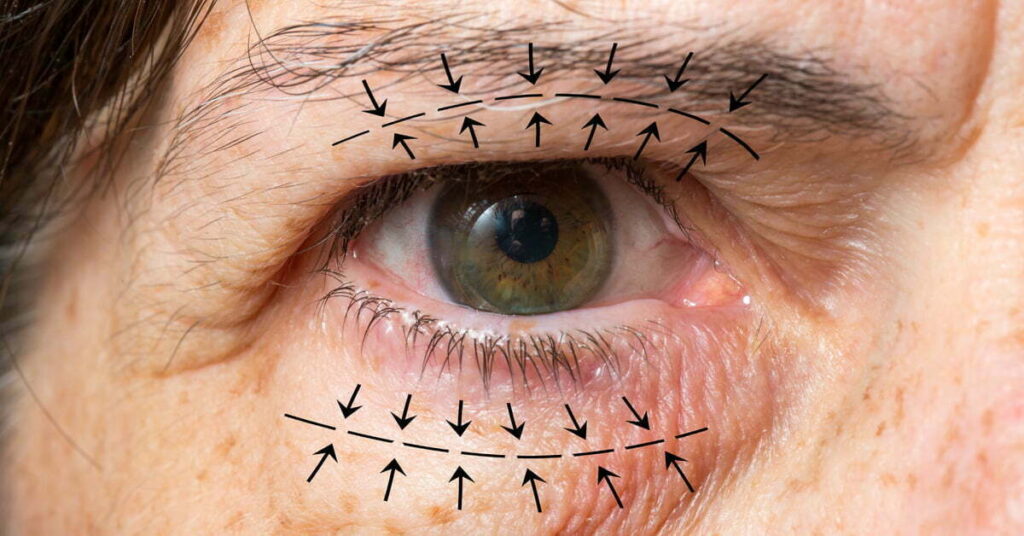Oculoplastic Surgery
Oculoplastic surgery refers to a specialized branch of ophthalmology that focuses on the reconstruction and cosmetic enhancement of the eyelids, tear ducts, orbit (eye socket), and facial structures around the eyes. This field combines the principles of plastic surgery with ophthalmology to address both medical and aesthetic concerns related to the eyes and surrounding tissues.Oculoplastic surgeons perform a wide range of procedures, including those to treat trauma, congenital defects, aging changes, tumors, and cosmetic enhancements. The goal of oculoplastic surgery is to restore function, improve appearance, and ensure the long-term health of the eye and its surrounding structures.

Types of Oculoplastic Surgery
Eyelid Surgery (Blepharoplasty)
- Blepharoplasty is the most common type of oculoplastic surgery and involves the removal of excess skin and fat from the upper or lower eyelids. This procedure is performed to correct droopy eyelids (ptosis), under-eye bags, or sagging skin, which can impair vision and create an aged appearance.
- Upper Eyelid Blepharoplasty: Removes excess skin and fat from the upper eyelids to treat ptosis and improve vision.
- Lower Eyelid Blepharoplasty: Targets under-eye bags, reducing puffiness by removing or repositioning fat and tightening the skin.
- Blepharoplasty is the most common type of oculoplastic surgery and involves the removal of excess skin and fat from the upper or lower eyelids. This procedure is performed to correct droopy eyelids (ptosis), under-eye bags, or sagging skin, which can impair vision and create an aged appearance.
Ptosis Repair (Droopy Eyelid Surgery)
- Ptosis refers to the condition where the upper eyelid droops over the eye, potentially obstructing vision. Surgery to correct ptosis involves tightening the muscles that lift the eyelid (levator muscle) or repositioning the eyelid to restore normal function and appearance.
Eyelid Reconstruction
- This procedure is required after trauma, disease, or congenital conditions that cause loss or deformation of the eyelid. Reconstruction techniques may involve tissue grafting, skin flaps, and the repair of both skin and muscle layers to restore eyelid function and appearance.
Orbital Surgery
- Orbital surgery is performed to address issues within the eye socket (orbit), such as fractures, tumors, or deformities. Common orbital surgeries include:
- Orbital Fracture Repair: Treatment of fractures resulting from trauma or accidents.
- Orbital Decompression: Used for patients with thyroid eye disease (Graves’ disease) to relieve pressure on the eyes and improve appearance.
- Orbital Tumor Removal: Surgical removal of benign or malignant tumors from the orbital area.
- Orbital surgery is performed to address issues within the eye socket (orbit), such as fractures, tumors, or deformities. Common orbital surgeries include:
Dacryocystorhinostomy (DCR)
- This surgery is performed to treat blocked tear ducts, a condition that causes excessive tearing or chronic eye infections. The procedure involves creating a new passage between the tear sac and the nasal cavity to allow for proper tear drainage.
Canthoplasty and Canthopexy
- Canthoplasty is a surgical procedure to tighten and reposition the lateral canthus (outer corner of the eye), often done to correct sagging eyelids or improve the appearance of the lower eyelid.
- Canthopexy is a less invasive procedure to support the lateral canthus, typically used in combination with eyelid surgery.
Eyelash Restoration (Latisse)
- Oculoplastic surgeons can use medications like Latisse to promote the growth of eyelashes in patients who have lost their lashes due to trauma, surgery, or medical conditions.
Aesthetic Facial Surgery Around the Eyes
- Many oculoplastic surgeons also perform cosmetic procedures like brow lifts and facelifts in conjunction with eyelid surgery to address signs of aging around the eyes, including crow’s feet and sagging brows.
